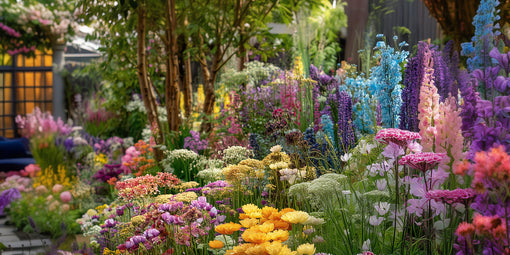
- Article published at:
Drawer menu

To enjoy your flowers as long as possible, the most important thing is to use a clean vase. However, you may be surprised to learn that soap is not enough to kill all the germs inside your vase.
So, what does work? We at LOV Flowers have the answer for you right here. And better yet, it’s sustainable too…
Bacteria growth is the worst thing for your flowers. It makes the water in your vase dirty and smelly, and it kills your flowers much quicker. Unfortunately, you cannot stop the germs from developing, but you can slow down the process.
When it comes to taking care of your flowers, we want to give you the very best tips so you can enjoy them for much longer. The obvious choice would be to advise you to use a drop of bleach to keep your vase germ-free.
However, the problem with this is that it’s not that environmentally friendly. You can, instead, choose to pop a piece of Milton tablet into your vase, which is a bit kinder towards the environment.

The first thing you need to think about is the fact that you need to clean your vase every time you refresh the water, which should be done every two to three days - and again before storing your vase.
Make sure to always cut a bit of the stems when you refresh the water, as this removes any bacteria growth on the stem ends, and allows your flowers to take in as much water as possible.
Rinse the vase with water and use a mild eco friendly detergent with a scouring natural sponge to clean the vase properly inside and out.
Don’t forget to clean the edges of the neck of the vase as well as the bottom and the marks which are left from the waterline.
Rinse your vase with clean water and dry it with a clean dish towel. Repeat step one if needed.

Fill your vase to about a third of its capacity with fresh, cold, tap water.
Add a sachet of flower food and stir well. The nutrition in the food will make sure that your flowers get enough energy to flourish. Try our sustainable flower food sachets with recyclable packaging.

Remove the excess leaves from your flowers before you place them in the water. Should any leaves fall in the water when arranging your flowers, remove them straight away as these will encourage bacteria growth.
Once all of your flowers are in water, place them in a cool and shady spot away from radiators or direct sunlight. Don’t forget to clean your vase every two to three days, cut the stems diagonally and refresh the water!
Flowers are a vital part of our ecosystem and have a positive effect on our health and wellbeing. So let’s all help out and do our part so that we can continue making people and the planet happy with flowers.
Don't forget to try our range of sustainable letterbox flowers! We deliver same day within London.